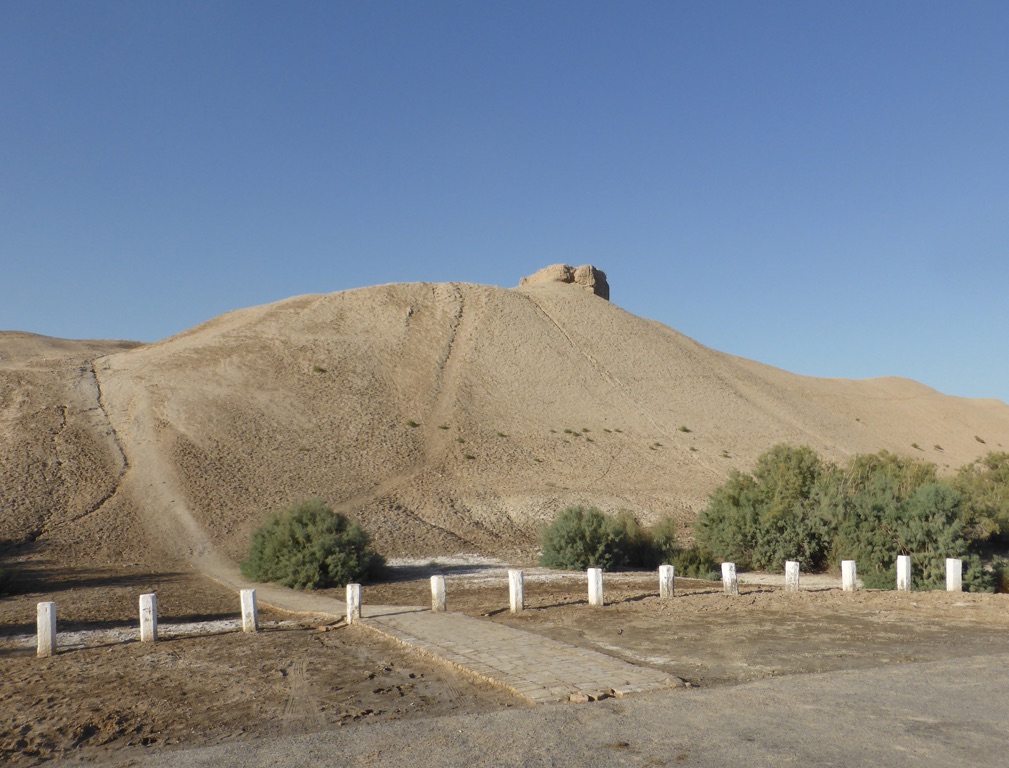Erk Kala, also known as the “Fortress of Alexander,” is an ancient archaeological site located in modern-day Turkmenistan. It is part of the larger site of Merv, which has been recognized by UNESCO as a World Heritage Site. Erk Kala dates back to the 6th century BC and is the oldest of the five main sites that make up the historical urban center of Merv. The site is a testament to the various cultures and empires that have influenced the region, including the Achaemenid Empire, the Hellenistic period, and later Islamic cultures.
Achaemenid Empire
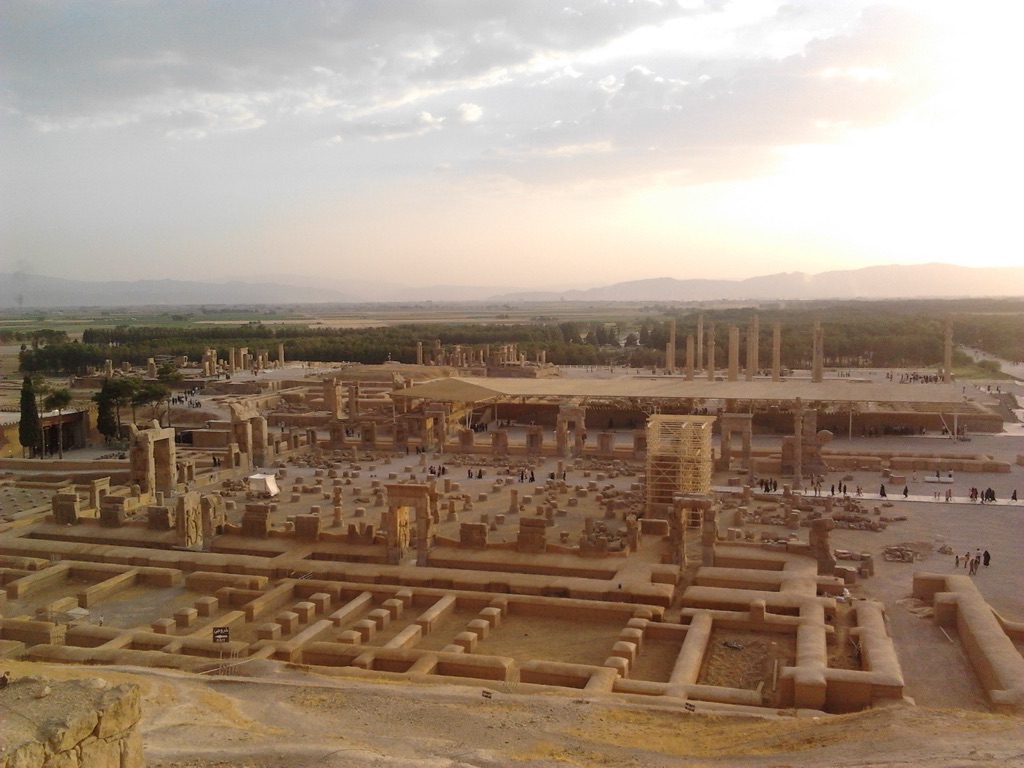
The Achaemenid Empire, also known as the Achaemenid Persian Empire, was a remarkable era in history. Founded by Cyrus the Great, it expanded under his rule and his successors. By 500 BCE, it became the largest empire the world had ever seen. The diversity of its people was vast, including various languages, religions, and cultures. The empire’s governance was efficient, even allowing local customs and laws to prevail. It fostered a spirit of tolerance and respect across its territories. Its advancement in administration paved the way for future empires.
The empire’s capital, Persepolis, was the heart of the Achaemenid Empire of Persia. Darius I built this imperial city with grand palaces and majestic halls. It displayed the empire’s wealth and power. Visitors can still see the impressive ruins today. Carvings and reliefs tell tales of the empire’s grandeur. Its architecture influenced later Persian designs. Today, Persepolis is a UNESCO World Heritage Site, highlighting the legacy of the Achaemenid’s architectural prowess.
The Achaemenid Empire, a beacon of ancient civilization, is often referred to today as the First Persian Empire. This designation distinguishes it from subsequent Persian empires, such as the Parthian and Sassanian Empires, which also played significant roles in the region’s history. The term “First Persian Empire” underscores its foundational status in the rich tapestry of Persian and Middle Eastern history. It is remembered for its unprecedented scale, innovative governance, and the cultural and architectural legacy it left behind, which continues to fascinate scholars and laypeople alike.
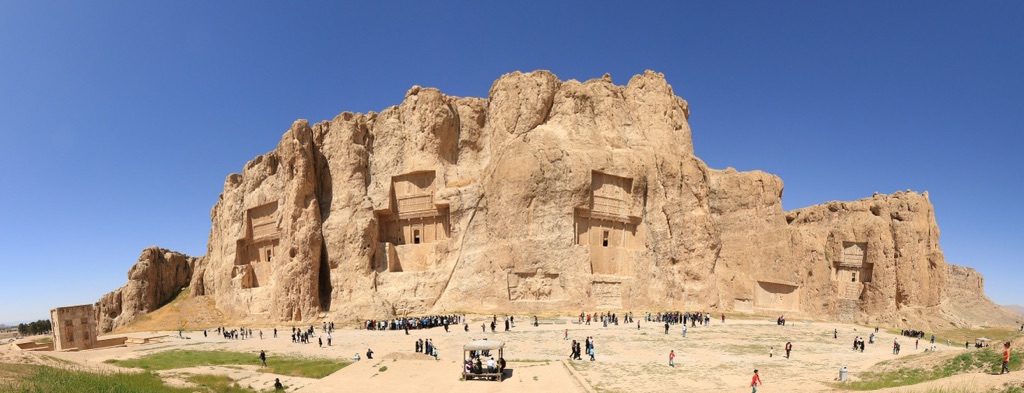
The downfall of the Achaemenid Empire came at the hands of Alexander the Great, who defeated it in a series of decisive battles. The most notable of these was the Battle of Gaugamela in 331 BCE, where Alexander’s tactical genius overwhelmed the Persian forces led by King Darius III. Following this victory, Alexander swiftly took control of the empire’s major cities, including Babylon, Susa, and Persepolis, which he famously ordered burned in 330 BCE. This marked the end of the Achaemenid Empire, paving the way for the Hellenistic period and the spread of Greek culture across the former empire.
Despite its vast expanse and the diverse cultures within its borders, the Achaemenid Empire is often regarded as having been relatively peaceful, especially in comparison to other empires of antiquity. Its system of satrapies, or provinces, allowed for a degree of local autonomy, and the empire’s rulers generally practiced a policy of religious and cultural tolerance. This approach helped to maintain stability and fostered loyalty among the conquered peoples. Moreover, the Royal Road and other infrastructure projects improved communication and trade, further contributing to the empire’s internal peace and prosperity.
The Achaemenid Empire lasted for over two centuries, from its founding by Cyrus the Great in 550 BCE to its conquest by Alexander the Great in 330 BCE. Throughout this period, it underwent significant expansion and consolidation, reaching its zenith under Darius I and Xerxes. Despite facing internal rebellions and external threats, the empire managed to maintain its integrity and influence, leaving a lasting legacy on the regions it governed. Its innovative administrative systems, respect for local traditions, and monumental architectural achievements set standards that influenced subsequent empires in the region and beyond.
The Achaemenid Empire archaeological sites and artifacts
FAQ: Exploring the Achaemenid Empire: From Rise to Fall
What is the Achaemenid Empire known as today?
The Achaemenid Empire, a beacon of ancient civilization, is today primarily located within the borders of modern-day Iran. At its zenith, this empire stretched from the Balkans and Eastern Europe in the west, to the Indus Valley in the east, making it one of history’s largest empires. Its heartland, Persia, is the predecessor of today’s Iranian nation, carrying forward the legacy of a rich cultural and historical heritage.
Who defeated the Achaemenid Empire?
The Achaemenid Empire met its demise at the hands of Alexander the Great, a Macedonian conqueror whose military genius and ambition led him to the Persian Empire’s doorstep. In a series of decisive battles, including the Battle of Issus in 333 BCE and the Battle of Gaugamela in 331 BCE, Alexander dismantled the Achaemenid defenses and eventually overthrew Darius III, the last Achaemenid emperor. This marked the beginning of Hellenistic rule over the former Achaemenid territories.
Why did the Achaemenid Empire fall?
The fall of the Achaemenid Empire can be attributed to a combination of factors:
– Military defeats: Alexander the Great’s strategic brilliance outmatched the Achaemenid forces, leading to crucial losses.
– Internal strife: The empire was plagued by court intrigues, rebellions, and the assassination of emperors, weakening its stability.
– Administrative challenges: Managing the vast expanse of the empire proved increasingly difficult, leading to inefficiencies and local discontent.
– Economic pressures: The costs of maintaining a large military and administrative apparatus strained the empire’s resources.
Was the Achaemenid Empire peaceful?
The Achaemenid Empire is often celebrated for its relatively progressive and tolerant approach to governance. Founded by Cyrus the Great, it was known for its respect for the customs and religions of the lands it conquered. Cyrus’s declaration, sometimes referred to as the first charter of human rights, exemplifies this approach. The empire implemented an efficient administrative system, built infrastructure like the Royal Road for communication and trade, and used a common currency, which fostered economic stability and growth. While it did engage in military campaigns to expand and defend its territories, the Achaemenid rulers also focused on diplomacy and building alliances. Thus, while not entirely peaceful, the Achaemenid Empire was notable for its efforts to maintain harmony and order within its vast and diverse territories.
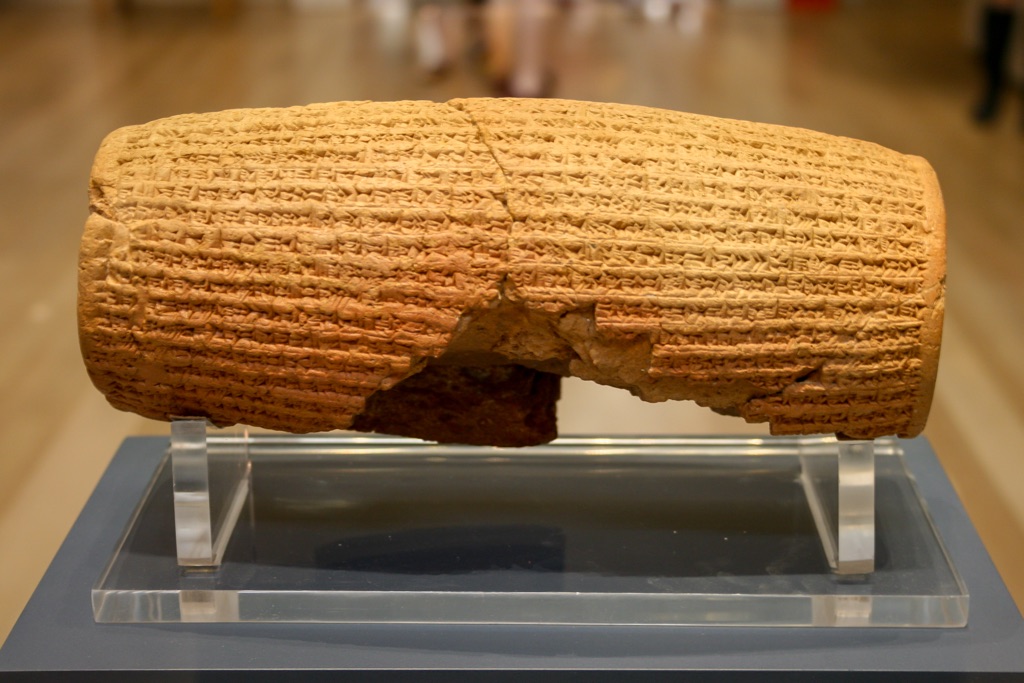
The Cyrus Cylinder
The Cyrus Cylinder is an ancient clay artifact that dates back to the 6th century BC. It was created during the reign of Cyrus the Great, the founder of the Achaemenid Empire in Persia. The cylinder is inscribed in Akkadian cuneiform script and has been hailed as the first charter of human rights. It was discovered in 1879 during excavations in Babylon and has since been a key piece of evidence in understanding ancient Persian history and the early concepts of governance and human rights.
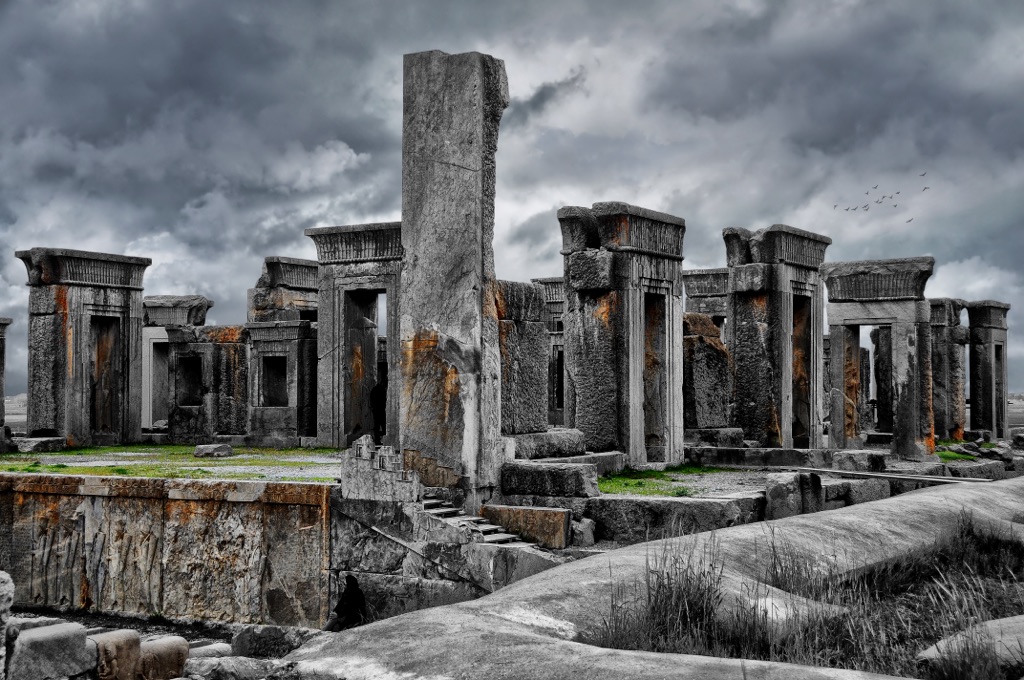
Persepolis in Iran
Persepolis, a masterpiece of Persian architecture, stands as a testament to the ancient Achaemenid Empire. Located in the heart of Iran, this historical site embodies rich cultural significance and intricate design. Through the towering columns and remarkable bas-reliefs, Persepolis reflects the glory of past civilizations. Visitors from around the world are captivated by the grandiosity of the Tachara Palace and the majestic Gate of All Nations.
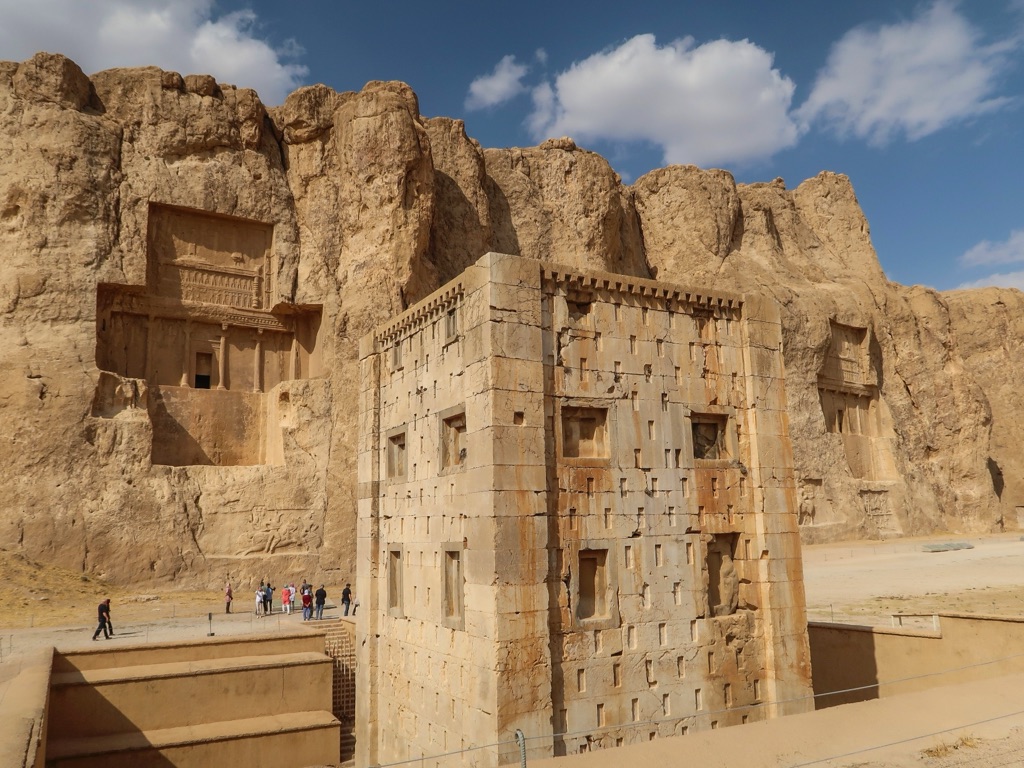
Naqsh e Rostam
Naqsh e Rostam is a historic site of colossal grandeur and significance, where echoes of ancient ceremonies still linger. Known as the necropolis of Persian kings, it boasts a cluster of royal rock tombs carved into a sheer cliff face. Visitors marvel at its four monumental tombs, belonging to Achaemenid kings, including Darius the Great. The site also includes seven Sassanian rock reliefs that showcase the empire’s power through depictions of imperial conquests and royal ceremonies, creating a narrative carved in stone that has withstood the test of time.
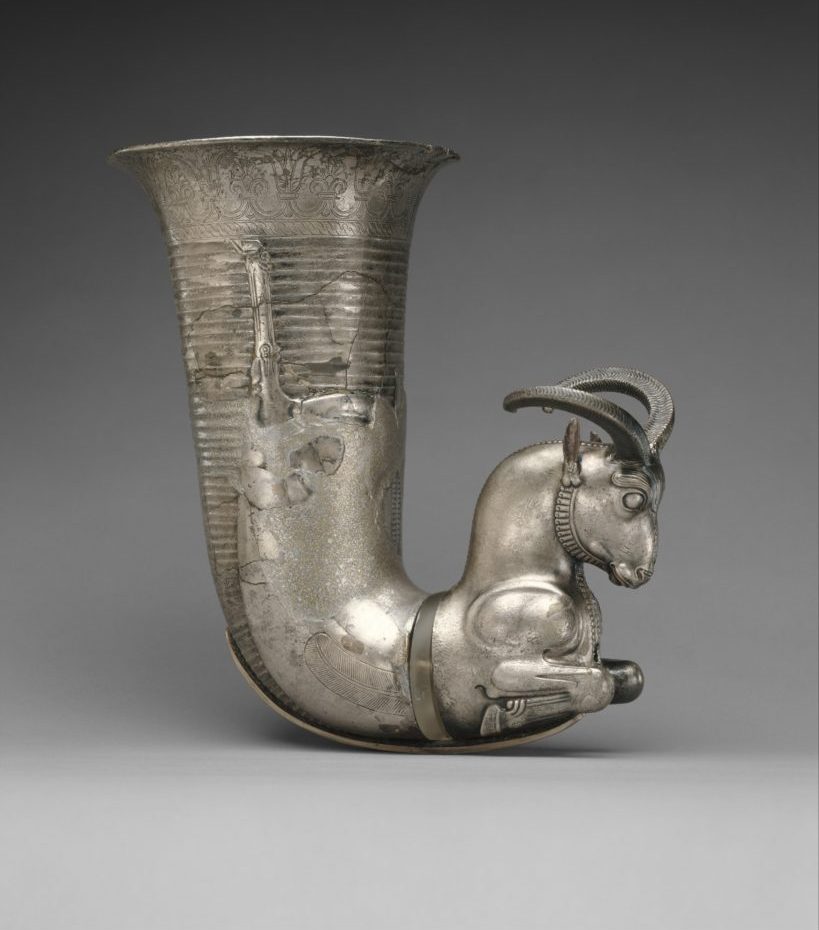
The Achaemenid Silver Rhyton
The Achaemenid Silver Rhyton is a significant artifact from the Achaemenid Empire, which was a vast and powerful empire in ancient Persia from 550-330 BC. The rhyton, a ceremonial drinking vessel, is an exquisite example of the artistic craftsmanship and aesthetic sophistication of this period. It is made of silver and intricately decorated with motifs and scenes that provide valuable insights into the culture, beliefs, and practices of the Achaemenid people.
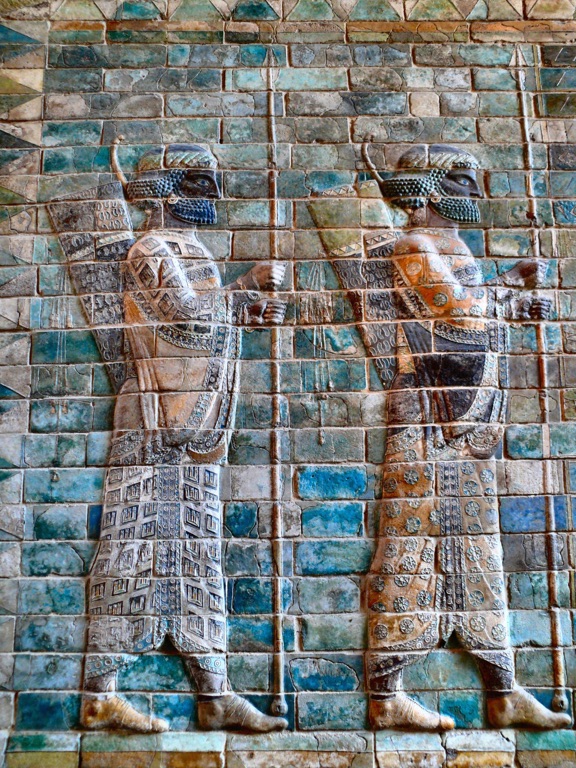
The Frieze of Archers from the Palace of Darius I
The Frieze of Archers from the Palace of Darius I is a stunning piece of ancient Persian art. Crafted during the Achaemenid Empire, it features a line of royal archers, each depicted in exquisite detail. This frieze, once adorning the walls of the palace in Susa, is a testament to the grandeur of ancient Persian architecture and the skill of its artisans.

